Becoming a Citizen Spy
Normal citizens in Ukraine have helped prove Russian aggression through Facebook photos and YouTube videos.
Becoming a Citizen Spy
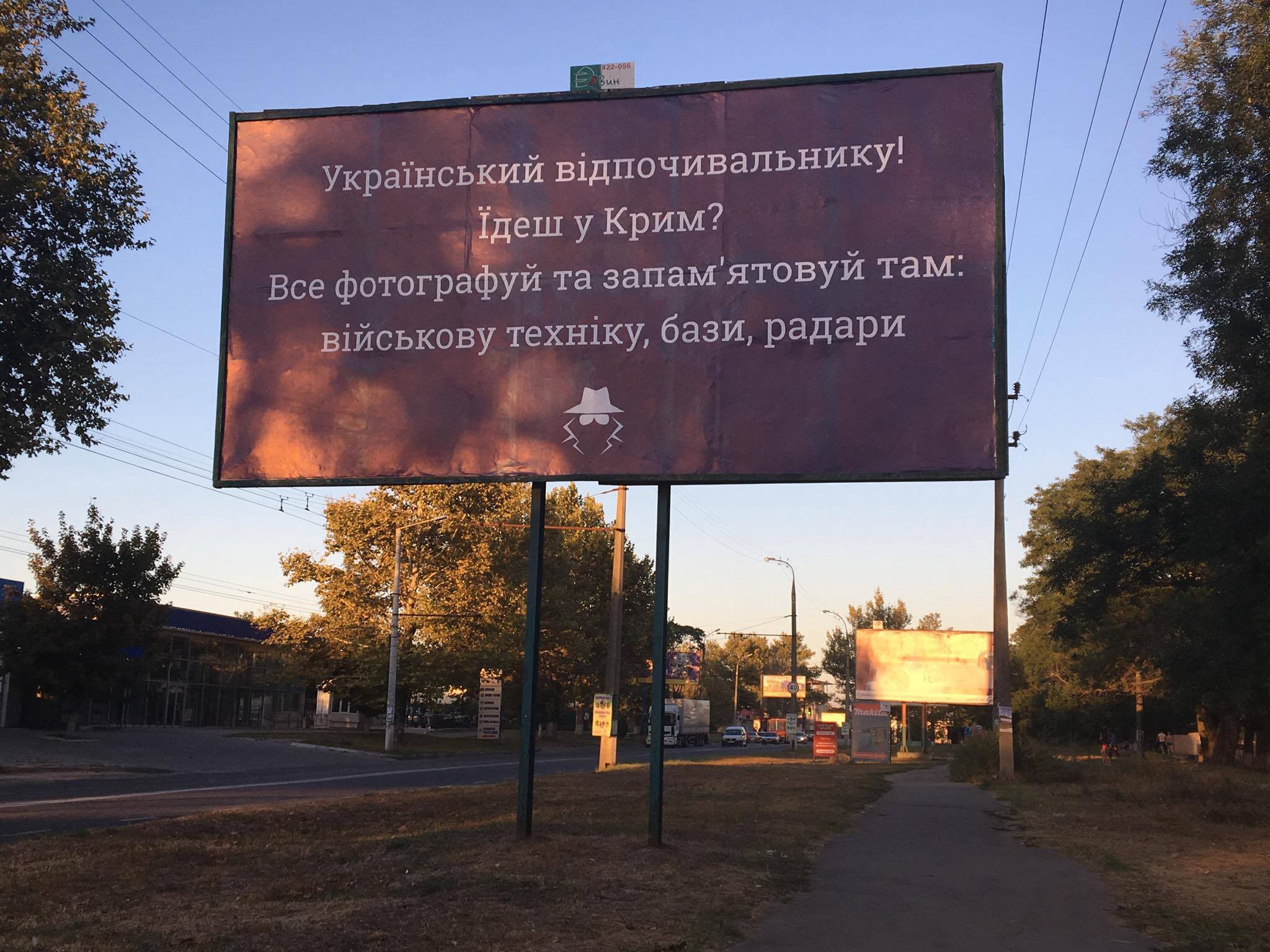
How normal citizens have helped prove Russian aggression in Ukraine
When driving through Kherson, many Ukrainians are finding a large billboard asking them to conduct citizen espionage if they are headed to Crimea for vacation:
“ Ukrainian travelers! Going to Crimea? While there, memorize and photograph everything: military equipment, bases, and radar installations”
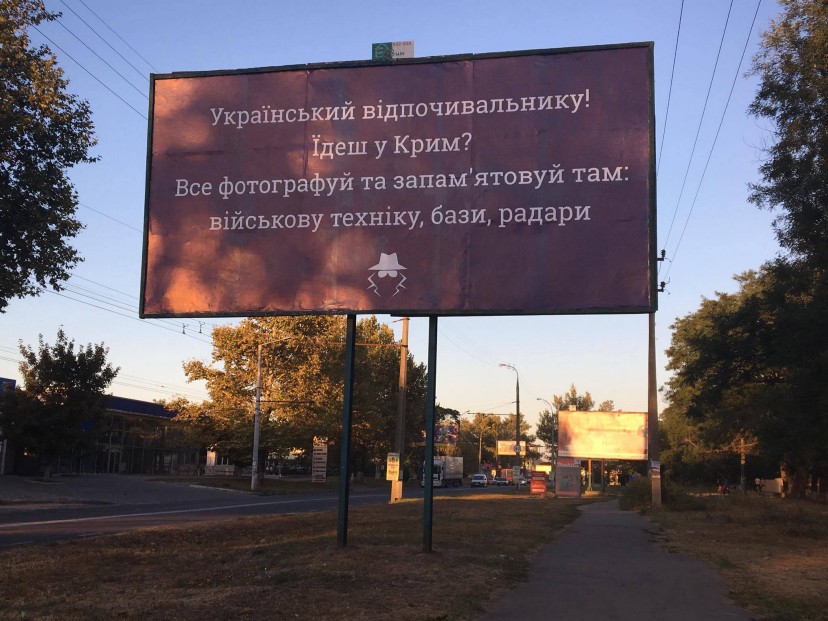
In reality, the organizers who helped put up this billboard are not calling for Ukrainian citizens to become spies, but instead are trying to scare away Ukrainian tourists who may want to travel to occupied Crimea. Anton Hodza, along with other activists, came up with this idea and worked with Kherson city authorities to put up the billboard, along with two others on major roadways in the direction of Crimea.
The foundation of the idea is that there have been hundreds of instances of normal Russian and Ukrainian citizens sharing photographs and videos that contribute further proof of Russia’s role in the ongoing war in eastern Ukraine. More often than not, these citizens have no political goal in mind — they are just sharing a video of extraordinary events in their once-sleepy cities. Because of this, Russian authorities are likely paranoid about Ukrainians taking photographs or videos of their military equipment in Crimea, especially considering the supposed “terror plot” in Crimea from August.
Anton Hodza spoke with DFRLab and explained his reasoning for how he and his friends came up with the idea of the billboard and its intention:
“It is a warning to reckless Ukrainians who choose Crimea as a travel destination. Of course, if people have relatives or real estate in Crimea, they have no choice. So the board is aimed at tourists from Ukraine (who have no houses or connections in Crimea) to scare them off and make them think twice before going to Crimea. […] They will see the board and think that the FSB has also seen it. So, if they take selfies on the beach in Crimea, they could get into trouble. Their next thought should then be: instead of Crimea, let’s go to Odesa or the Carpathians.”
This particular billboard is located in Kherson on the Kindiyskoe highway — facing towards drivers who would be headed towards Crimea. A dashcam video from YouTube user “Den9ik Odessit,” filmed while headed southwest on the Kindiyskoe highway (facing away from the billboard), confirms the location of the photograph on Anton Hodza’s Facebook page.
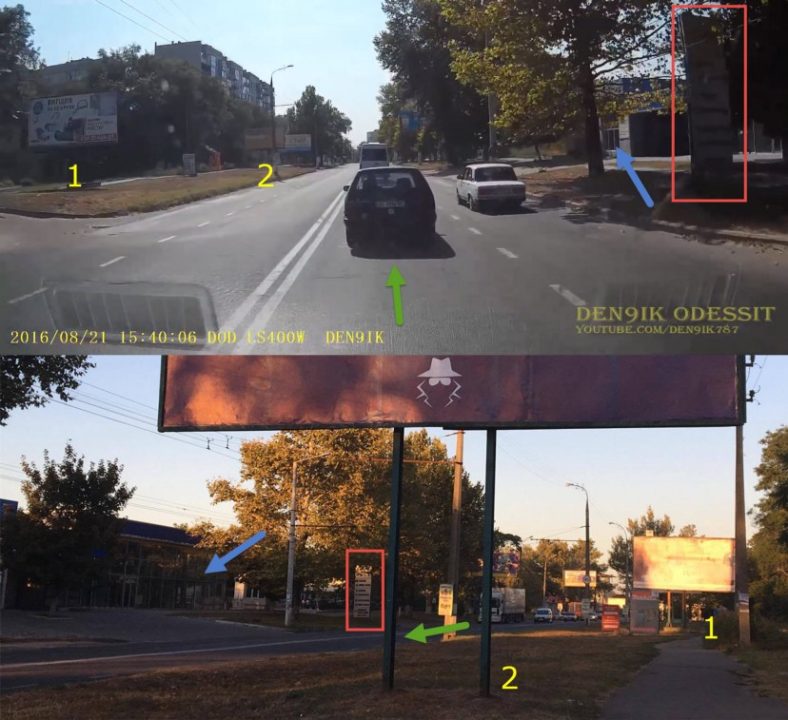
Anton provided DFRLab with photographs of two installations of the same billboard facing in the direction of drivers headed to Crimea: one on Berislavskoe highway, and the other on Nikolaevskoe highway.
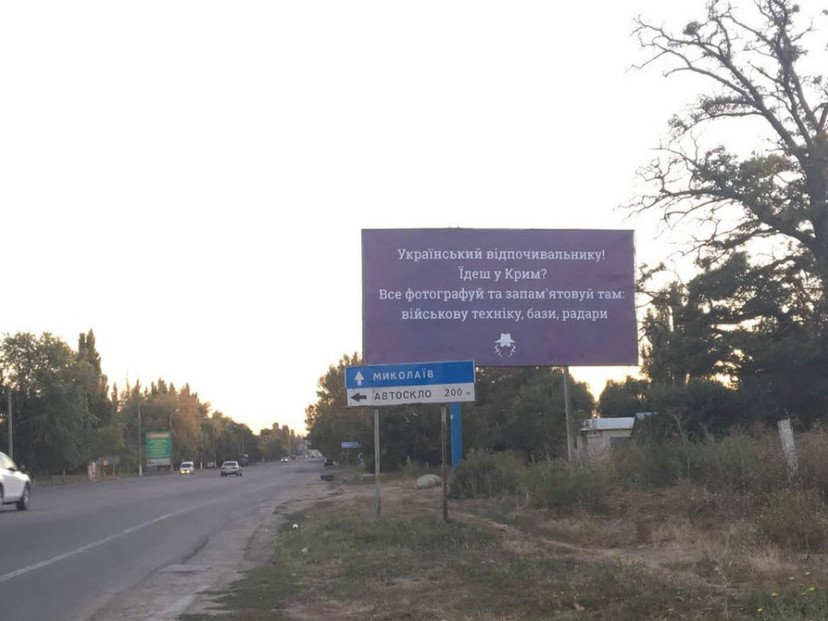
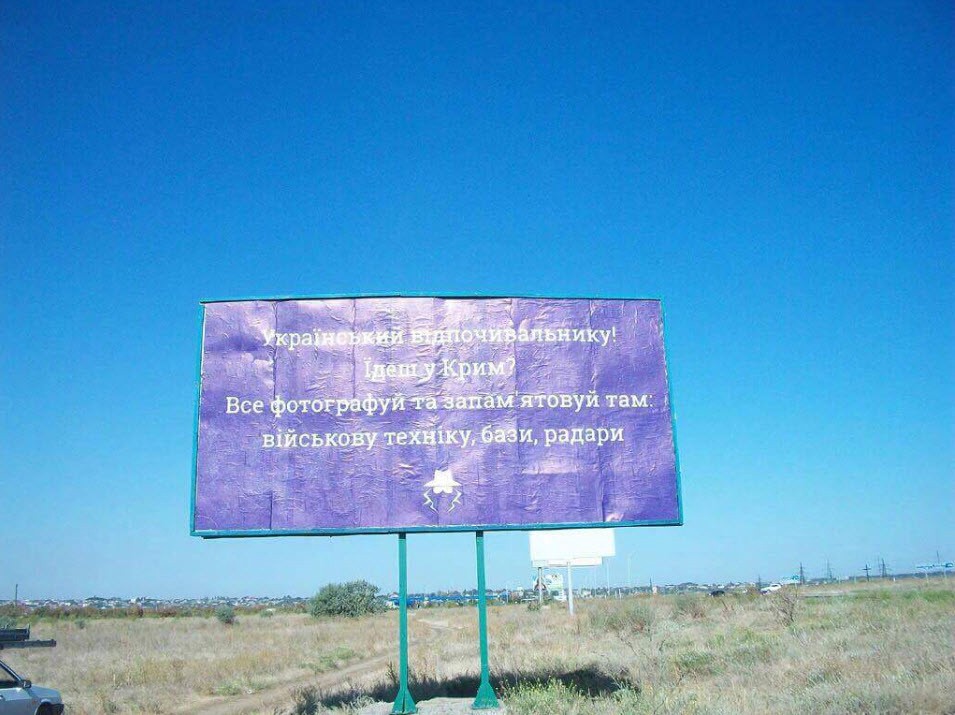
This dark humor of this billboard only works because there have been so many examples of citizens acting as accidental spies in eastern Ukraine and Russia, sharing valuable sightings of military deployments and often revealing Russian involvement in the conflict. What are some of these examples of everyday people accidnetally capturing significant, historic events?
A relaxing evening at the pond
On July 16, 2014, the day before the downing of MH17, a flurry of videos appeared online showing an apparent artillery attack in the Russian city of Gukovo, located on the border between Russia and Ukraine. In one of these videos, we can clearly see an artillery system firing west (the camera is facing north), while the man filming the events was relaxing near the Kovalesky pond in northwest Gukovo.
As seen in a Bellingcat report on this and other artillery attacks and the Atlantic Council’s “Hiding in Plain Sight,” the location of the video is corroborated by both satellite and ground-level imagery.
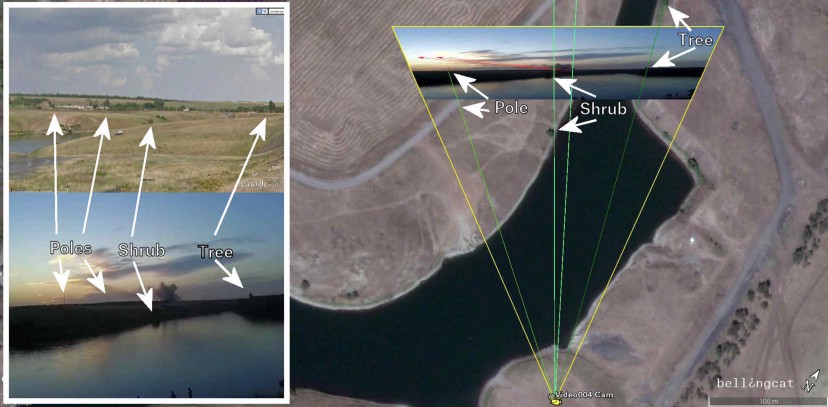
The craters for this attack can be observed near the Dolzhanskaya-Capital mine in Ukraine, which was devastated on July 16 by artillery attacks staged from Russian teritory. Despite a half-dozen videos from Russian citizens of this attack, Russia has still not admitted its culpability in staging artillery attacks onto Ukrainian territory, and still claims that it is not a participant of the conflict in eastern Ukraine.
Driving by the MH17 murder weapon
A Ukrainian driving through a main thoroughfare of the city of Makiivka in July 2014 passed a white truck carrying a mysterious looking piece of military equipment, with four missiles mounted.
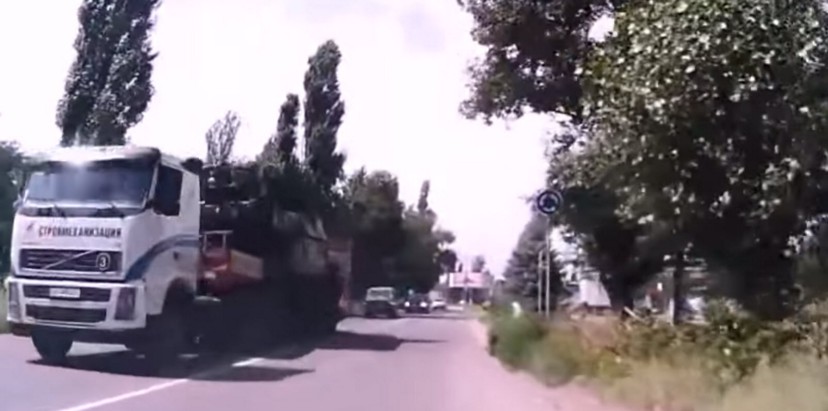
Approximately five hours after this video was taken, one of those four missiles (the second from the left, to be precise) exploded over the skies of Ukraine and downed MH17, killing 298 civilians. Much of the evidence confirming the transport of a Buk-M1 missile launcher (TELAR) through the streets of eastern Ukraine came from ordinary citizens filming or photographing a strange piece of military equipment they had not seen before on their streets, differing from the countless armored personnel carriers and tanks seen everyday. More than two years after the tragedy of July 17, 2014, these photographs and videos continue to be key pieces of evidence and will likely heavily factor into the Dutch-led criminal investigation.
Two videos, one vehicle
Often, videos shared by citizens can be used in tandem with materials provided by professional news organizations or participants of a conflict. One such example can be seen in a video taken in Rostov, Russia showing an Msta-S self-propelled howtizer, and later the same Msta-S on a road in Ukraine, as filmed by Al Jazeera.

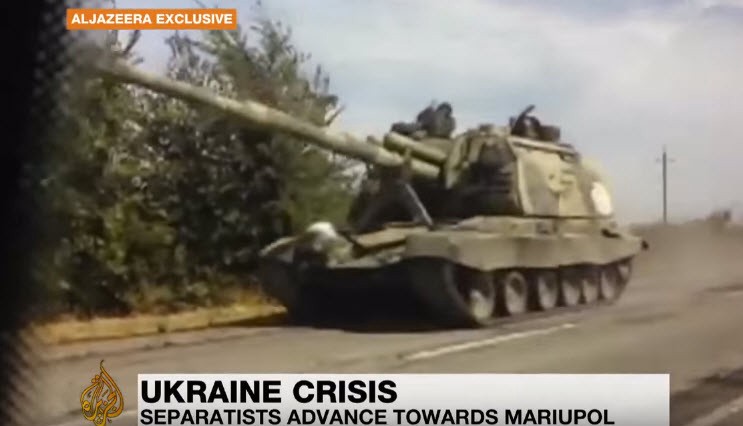
The Russian citizen who uploaded the video originally had no intention of revealing the activities of Russia in Ukraine, but due to the high quality of the video, it was easy to match the details of the Msta-S to the one seen later in Novoazovsk.
As seen in the billboards in and around Kherson, the usefulness — or from the Russian perspective, danger — of citizens accidentally providing valuable intelligence has become well known. With this practice, some citizens uploading videos are aware that their footage will be useful to investigators, and have provided the exact coordinates and time that the video was taken. With more smartphones in the pockets of people around the world, future conflicts will see increasingly ubiquitous coverage from citizen-provided media, as we have already seen in Syria and Ukraine.
Follow the latest Minsk II Violations via the @DFRLab’s #MinskMonitor.
For more in-depth analysis from our regional experts follow the AtlanticCouncil’s Dinu Patriciu Eurasia Center. Or subscribe to UkraineAlert.

